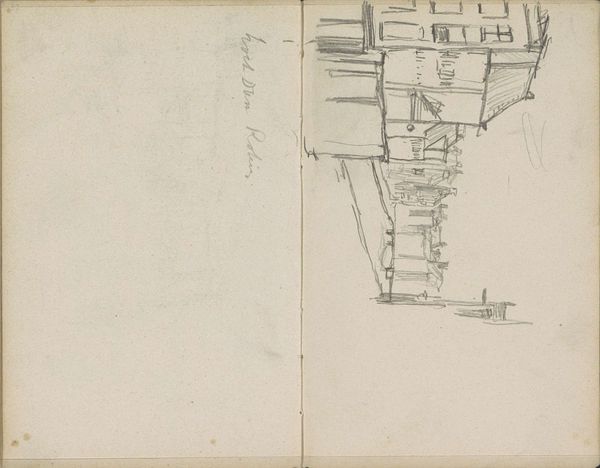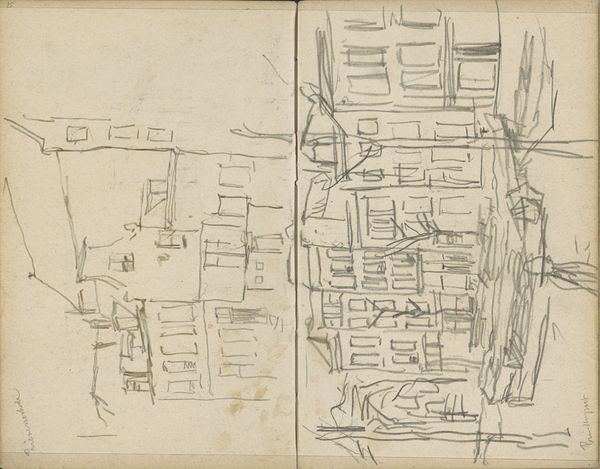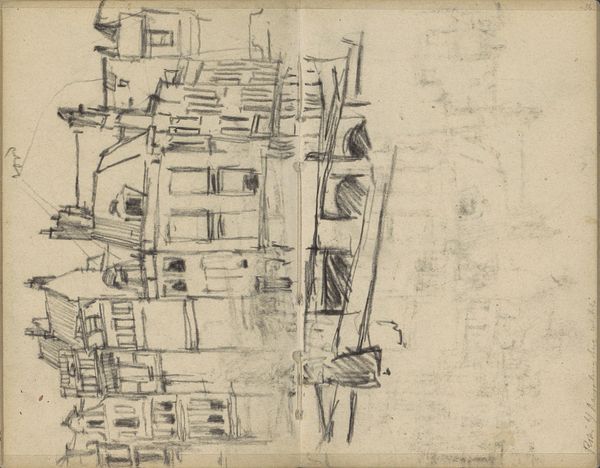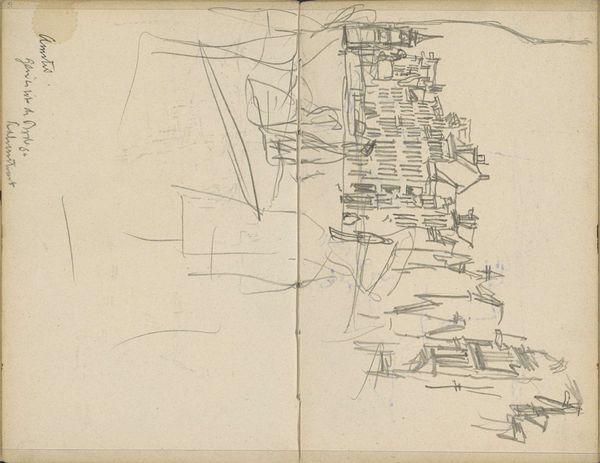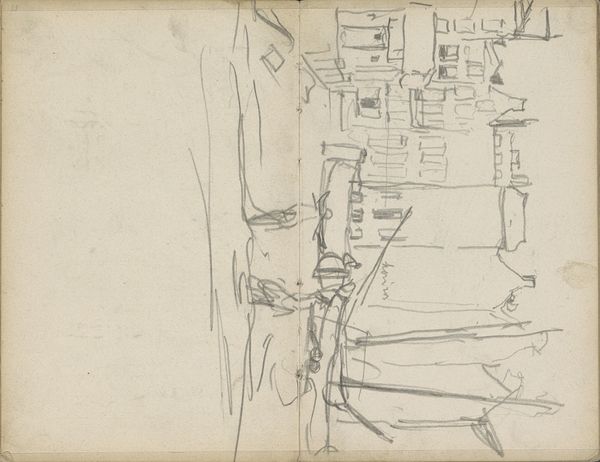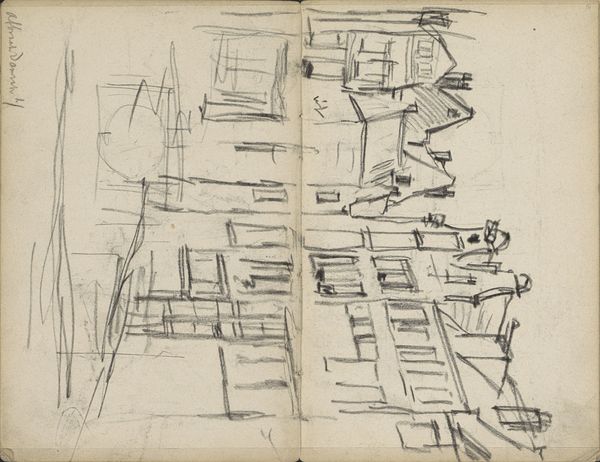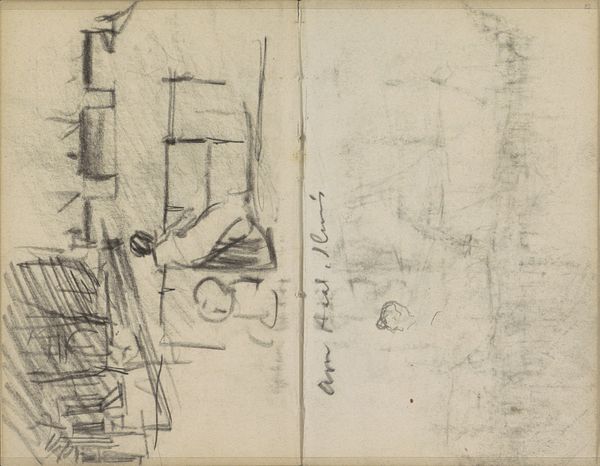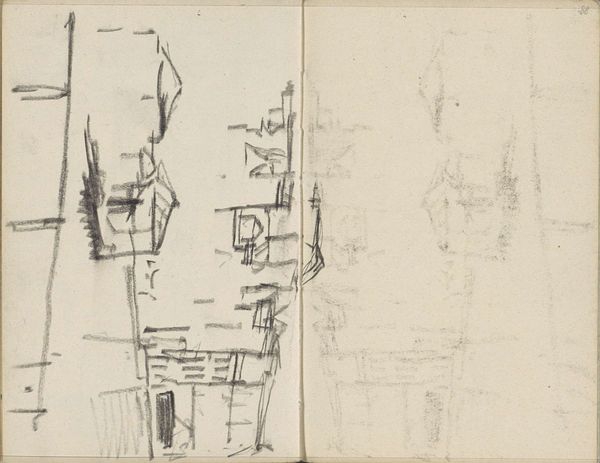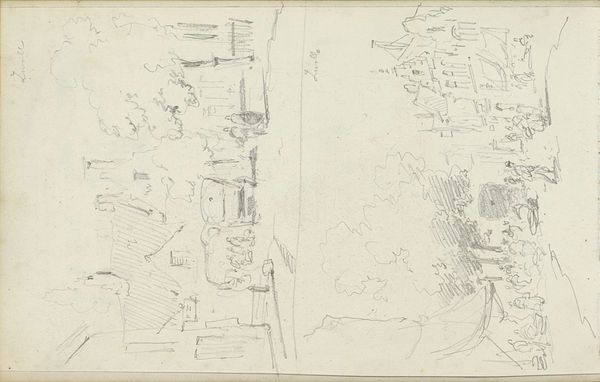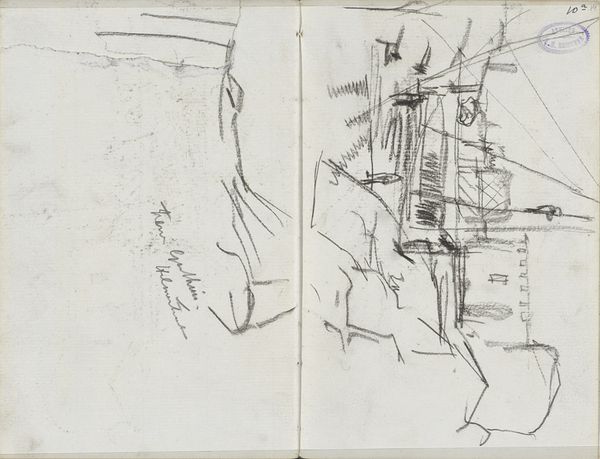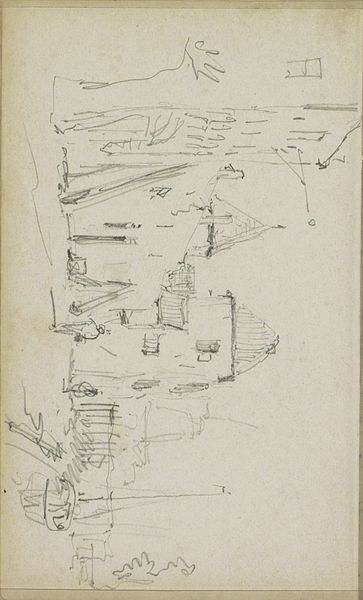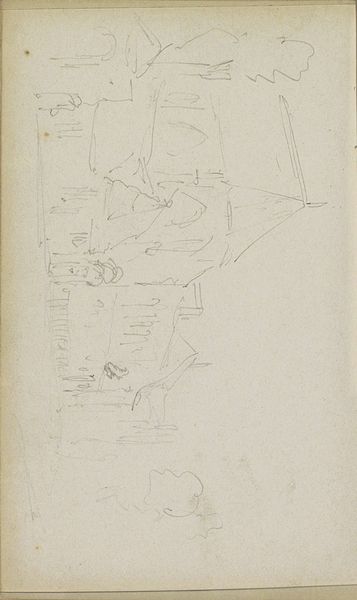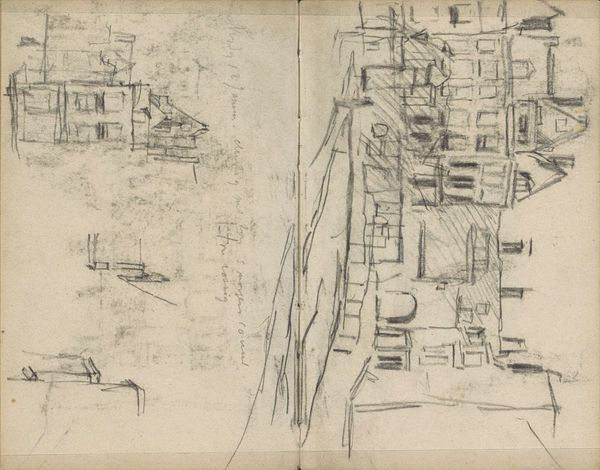
Copyright: Rijks Museum: Open Domain
Curator: Before us is George Hendrik Breitner's "Horse and a View on the Rokin in Amsterdam," dating from 1907. Rendered in pencil, this drawing resides in the Rijksmuseum's collection. Editor: It feels like a fleeting glimpse of a city, raw and unfinished. The lines are so quick, almost frantic. Is it just me, or does that horse look more like an afterthought than a central figure? Curator: That "afterthought," as you call it, reflects Breitner's fascination with capturing the immediacy of urban life. Breitner, after all, was known as the "painter of the people". He wasn’t interested in portraying an idealized Amsterdam. Instead, he wanted to record the grit and bustle. Editor: I can see that in the angular lines forming the buildings, almost like visual shorthand. And that central spire, dominating the cityscape—a steeple. Does it symbolize the dominant religious or political structure in the city at the time? Curator: It's certainly a marker of the urban fabric, a visual signifier in a rapidly changing city. Breitner was very aware of how Amsterdam's identity was shifting with modernization, how social changes were quite visible. The image captures the sense of observing a place undergoing constant reinvention. Editor: The horse then could symbolize a vestige of the past amidst that reinvention. Notice how it is sketched much more softly, how it lacks that angular energy of the buildings? This brings forth a palpable feeling of transience, the relentless march forward leaving older, simpler ways behind. Curator: Indeed. The lack of strong contrast adds to the subdued tone. Breitner uses this lack to evoke an Amsterdam shrouded in the era's ever-present mist, or maybe it’s simply suggesting a quiet urban anxiety. Editor: Perhaps the horse, often a symbol of hard work, represents not just a fading past, but also the anonymous workers whose efforts built this changing Amsterdam. An emblem for this hard work ethic and the common individual. Curator: An insightful interpretation! I see now the resonance of this drawing goes beyond its representation of Amsterdam’s landscape, delving into the core symbolism regarding time, the changing of an era. Editor: Absolutely. It seems to me that even though it may look quick and spontaneous on the surface, this drawing leaves so many things open for us to read, doesn’t it? It certainly left an aftertaste that speaks more powerfully to me after our exchange.
Comments
No comments
Be the first to comment and join the conversation on the ultimate creative platform.
